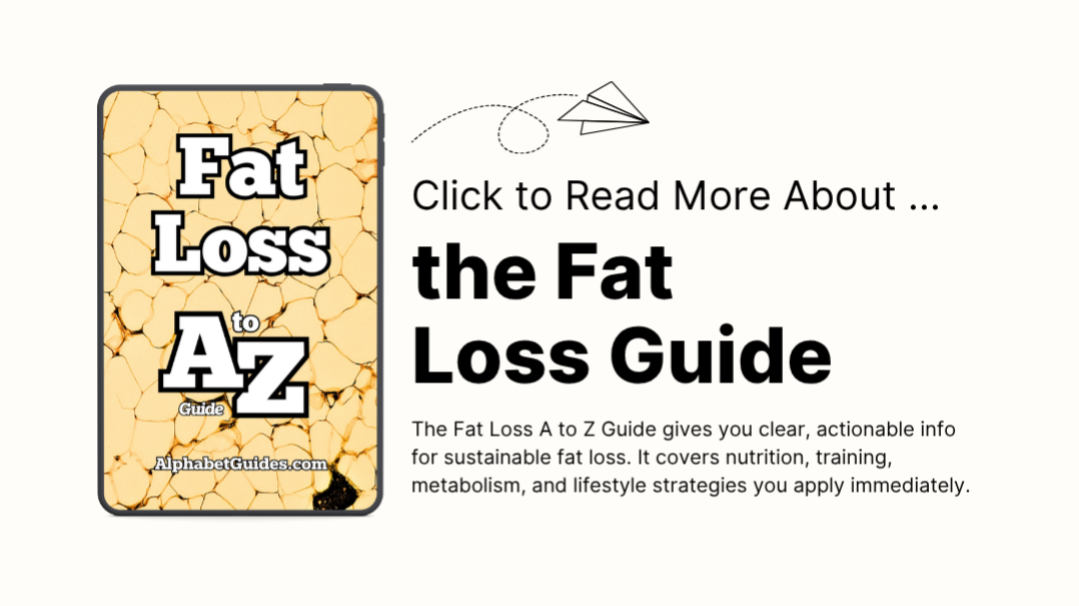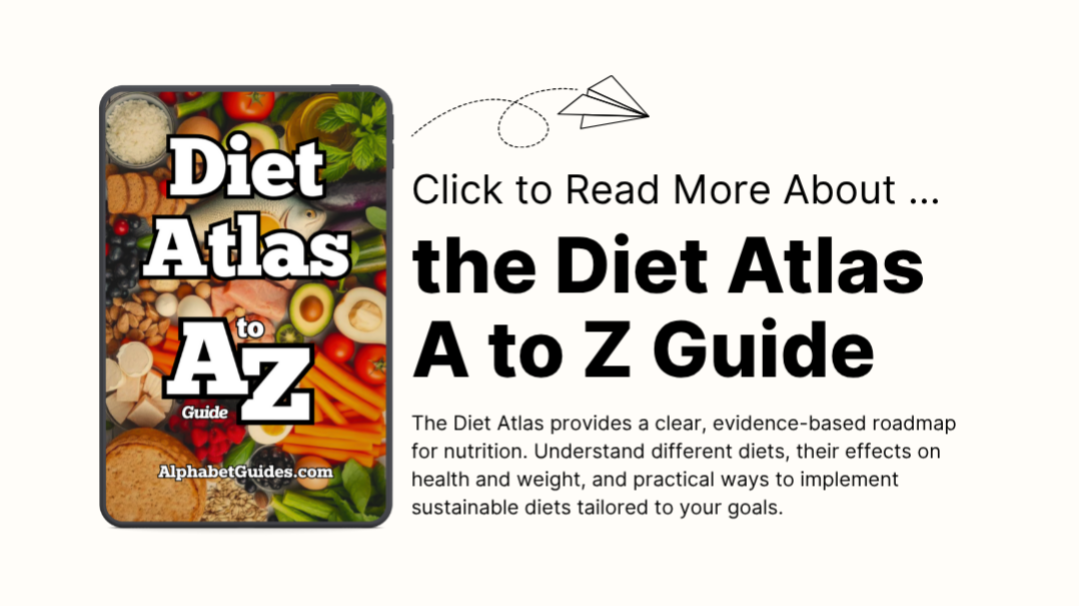The 3 Worst Diets: What to Avoid

When it comes to improving your health and losing weight, most people focus on finding a “perfect” diet that doesn’t really exist.
Every year, millions of people waste time, money, and (emotional) energy on diets that fail to deliver promised results and can actually damage their health. Poor diet choices can trigger nutrient deficiencies, disrupt metabolism, increase disease risk, and cause psychological distress, long after you’ve stopped the diet.
Think about it like this: if you're navigating through a minefield, knowing where the dangers are just as important as knowing one safe path through. The same principle applies to nutrition. By identifying and avoiding genuinely harmful diets, you can protect yourself from setbacks.
In fact, understanding what not to do is sometimes better than what to do. This article looks at three of the worst diets out there. Being aware of these dietary patterns will help you make informed decisions, spot red flags, and ultimately choose a sustainable diet that actually supports your long-term health and target body weight.

Subscribe to GuideNotes™ to get free and exclusive health tips from our guides — direct to your inbox every fortnight.
Thank you for subscribing!
Have a great day!
1. Crash Diets: The Fast Track to Poor Health
What Is a Crash Diet?
Crash diets, also known as rapid weight loss diets, quick-fix diets, or very low-calorie diets (VLCDs), represent an extreme approach to weight loss that severely restricts calorie intake. Typically, crash dieters consume fewer than 800 kcal/day.
These diets have cycled through popular culture for decades, constantly reappearing with new names and minor variations. You might recognise them as juice cleanses, the cabbage soup diet, grapefruit diets, extreme meal replacement programmes, or various “detox” diets promising rapid results.
How to Identify a Crash Diet
Crash diets share a few telltale characteristics. They promise dramatic weight loss in unrealistic timeframes; think “lose 10 pounds in 7 days.” They severely limit overall food intake or eliminate entire food groups completely. Many rely exclusively on single foods, liquids, or commercial meal replacements.
The marketing language is another giveaway. Crash diets typically use marketing rhetoric claiming to “reset your metabolism”, “flush toxins from your body”, or trigger special fat-burning “metabolic states”. These claims sound scientific (that’s the point!) but lack any legitimate scientific evidence.
The Appeal and the Reality
The psychological draw of crash diets is understandable. When you're frustrated with your body or have an upcoming event, a wedding, holiday, or reunion, the promise of immediate, visible results is tempting. The simplicity is also appealing. Following rigid rules about exactly what to eat eliminates decision-making and can feel easier than managing full, flexible eating plans.
Crash diets also tend to deliver initial, rapid weight loss. This creates a sense of accomplishment and renewed motivation. For some people preparing for medical procedures or managing acute health conditions under professional supervision, rapid weight loss may be medically necessary. However, this is where the benefits end and the problems begin for most people.
The Cost of Rapid Weight Loss
Consuming so few calories while drastically limiting food variety creates the risk of nutrient deficiencies. Your body requires nutrients like protein, fat, fibre, vitamins and minerals for basic bodily functions. Without adequate nutrition, these systems begin to fail.
Research shows that most crash dieters regain lost weight, often exceeding their starting weight within months. This phenomenon is called “weight cycling” or “yo-yo dieting”, and may actually worsen health outcomes compared to maintaining a stable weight.
There are other acute physical side effects as well: chronic fatigue, muscle wasting, weakness, dizziness, headaches, irritability, poor sleep, constipation, hair loss, menstrual irregularities, and gallstones, dehydration, and heart arrhythmia in severe cases, are all reported.
Beyond physical damage, crash dieting takes a significant toll on your mental health. Repeated failed attempts are associated with eating disorders, negative body image, and unhealthy psychological relationships with food.
Their restrictive nature, constant hunger, social isolation, and psychological burden make these diets virtually impossible to sustain beyond a few weeks/months.
Conclusion
Outside of professionally supervised medical emergencies, crash diets offer no long-term benefits and likely cause harm. The rapid weight loss comes at a high cost: nutritional deficiency, muscle wasting, cardiometabolic disease, and potential mental health issues. If you're searching for a healthy way to lose fat, crash diets are not the answer.
2. Fad Diets: A Crash Diet in Disguise
What Are Fad Diets?
Extreme fad diets represent a broad category of the severely restrictive ‘crash diets’, which are largely unproven. Unlike evidence-based diets developed through scientific research, fad diets typically emerge from commercial interests, celebrity endorsements, or pseudoscientific theories.
They gain popularity through sensational marketing rather than demonstrated effectiveness. Social media has dramatically amplified their reach, particularly among young adults and adolescents, who are especially vulnerable to persuasive before-and-after photos and ‘influencer’ testimonials.
Identifying Fad Diets
Like crash diets, they often severely restrict caloric intake to under 1,000 kcal/day. They eliminate entire food groups without medical necessity. Many fad diets promote “mono-diets”: eating only one type of food, like grapefruit, cabbage soup, or baby food.
Extreme fad diets typically impose rigid rules without flexibility and promise rapid, dramatic results. They frequently make claims about “detoxification” or miracle cures for various health conditions.
Why People Fall for Them
The appeal stems largely from desperation. People who get frustrated with gradual, sustainable approaches seek quick solutions. The marketing exploits body image concerns, cultural obsession with rapid transformations, and the human desire for simple answers to complicated problems.
The initial rapid weight loss can provide immediate psychological gratification. Seeing dramatic changes on the scale within days creates motivation and a sense of accomplishment. However, much of this initial loss is water weight, not fat.
Some people also like the rigid structure. Clear rules about “allowed” and “forbidden” foods remove uncertainty and eliminate the need for judgment and moderation. For people who feel overwhelmed by food decisions, this simplicity can feel psychologically easier.
The Problem(s)
Like crash diets, severe restrictions create nutritional deficiencies. The type of deficiency depends on which foods are eliminated. For example, ultra-low-carbohydrate diets reduce fibre and the micronutrients found in fruits, legumes and whole-grains.
Ultra-low-fat diets compromise fat-soluble vitamins and essential fatty acids that are crucial for brain function, hormone production, and cellular health. Ultra-low-calorie diets risk widespread nutrient deficiencies and provide inadequate protein for maintaining muscle mass.
Like crash diets, most fad diets tend to be unsustainable. They are commonly abandoned within weeks/months. Then the weight returns. Often with additional pounds, leading to recurring “weight cycling” and “yo-yo dieting”.
Conclusion
In addition to the general health risks associated with crash dieting, fad diets can change your relationship with food. They can increase the risk of developing eating disorders. The rigid thinking, food obsession, and guilt associated with “forbidden” foods can persist long after you stop the diet.
The poor long-term outcomes, abysmal adherence rates, and significant safety concerns make them inappropriate in nearly all instances. When searching for healthy weight loss approaches, extreme restriction fad diets should raise immediate red flags.
3. The Ultra-Processed Food Diet: A Modern Health Crisis
What Is the UPF Diet?
The ultra-processed food (UPF) diet isn't a deliberate dietary choice; it's a modern eating pattern dominated by industrially manufactured food products. The UPF diet represents an unintentional shift resulting from food industrialisation, aggressive marketing, and the appeal of convenience at low cost.
The scale of this problem is staggering. In some Western countries, UPFs now account for over 50% of total daily calories, and this percentage continues to rise.
Understanding UPFs
UPFs are formally defined by the NOVA classification system, developed by nutrition researchers to categorise foods by their degree of processing. UPFs fall into the highest category: industrial products typically containing five or more ingredients, many of which you'd never use in home cooking.
These ingredients include hydrogenated oils, high-fructose corn syrup, modified starches, protein isolates, emulsifiers, artificial colourings, flavours, and preservatives. The extensive processing fundamentally alters food structure, concentrating calories, removing fibre, and creating products designed for overconsumption.
What Are Ultra-Processed Foods?
Common examples surround you in every supermarket: sugar-sweetened beverages, packaged snack foods, instant noodles, mass-produced breads, breakfast cereals, reconstituted meat products (chicken nuggets, hot dogs, deli meats), frozen ready meals, candy, cookies, ice cream, and most fast food menu items.
These products share distinguishing features. They're designed for convenience; ready to eat or heat. They're engineered to be irresistibly tasty by combining fat, sugar, and salt so that they trigger reward pathways in your brain.
They're heavily marketed, profitable, and are commonly positioned as “healthy” through misleading health claims like “low-fat”, “whole grain” or “natural”.

How We Got Here
The shift toward UPF-dominated diets has occurred gradually over decades, coinciding with rising rates of obesity and cardiometabolic disease (among others). The modern food environment in developed nations now defaults to UPFs.
UPFs dominate in schools, workplaces, hospitals, vending machines, convenience stores, and restaurants. This makes avoiding them challenging without deliberate efforts. For many people, especially those with limited time, cooking skills, or access to fresh foods, UPFs represent the most accessible and affordable option.
Convenience Over Health
To be fair, UPFs do offer practical advantages, though none relate to health. They provide unmatched convenience, require minimal preparation time, cooking skills, or equipment. This makes them attractive for busy families, people working multiple jobs, or those lacking cooking knowledge or facilities.
UPFs have extended shelf lives, reducing food waste and shopping frequency. Their widespread availability and relatively low cost per calorie make them accessible to people with limited incomes and those living in “food deserts” with restricted access to fresh, whole foods.
These practical benefits explain why UPFs have become so popular. However, the health costs dramatically outweigh the benefits.
The Devastating Health Impact
Research has revealed the harm associated with UPF diets. The nutritional quality is severely compromised. UPFs deliver high levels of added sugars, unhealthy fats, and sodium while providing low amounts of protein, dietary fibre, and essential micronutrients per kcal.
Studies show that increasing UPF intake correlates with declining overall diet quality, increased risk of multiple nutrient deficiencies, and cardiovascular disease. People consuming a UPF diet eat ~500 kcal/day more and gain weight compared to those who eat minimally processed foods.
They drive the overconsumption. They are designed to make you eat more often and keep you eating longer.
The bad news doesn’t stop here. There are also concerns about other health impacts outside of obesity and cardiovascular disease. Studies have shown associations between UPF intake and increased risk of certain cancers (particularly colorectal cancer), depression and mental health disorders, metabolic diseases, type 2 diabetes, and cognitive decline.
Conclusion
The UPF diet represents a cautionary tale of how modern dietary preferences can actively undermine health. Robust evidence consistently links UPFs to increased risks for obesity, cardiovascular disease, and many other health conditions. Unlike the other diets in this article, the UPF diet isn't typically intentional; it's a default pattern caused by our food environment.
No health benefits exist beyond practical convenience. For anyone wanting to lose weight and/or improve their diet, immediately reducing UPF intake should be one of the first recommendations.
Conclusion: Protection Through Knowledge
Understanding these three dietary patterns: crash diets, extreme fad diets, and UPF consumption can help you make better health decisions. Each approach causes harm in different ways: severe restriction, nutritional inadequacy, metabolic disruption, and psychological damage.
The good news? Recognising these red flags helps you avoid wasting time and harming your health on approaches that simply don't work. Sustainable fat loss and improved health come from balanced, evidence-based approaches that nourish your body rather than deprive it.
N.b. This article is for informational purposes only and is not medical advice. Please consult a qualified healthcare provider before making health decisions.

